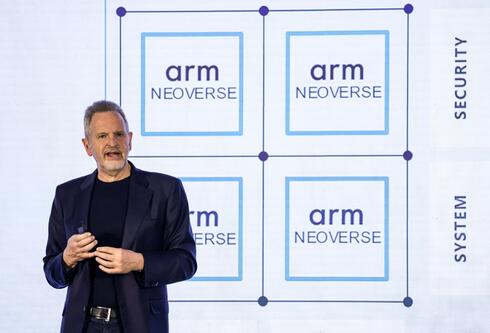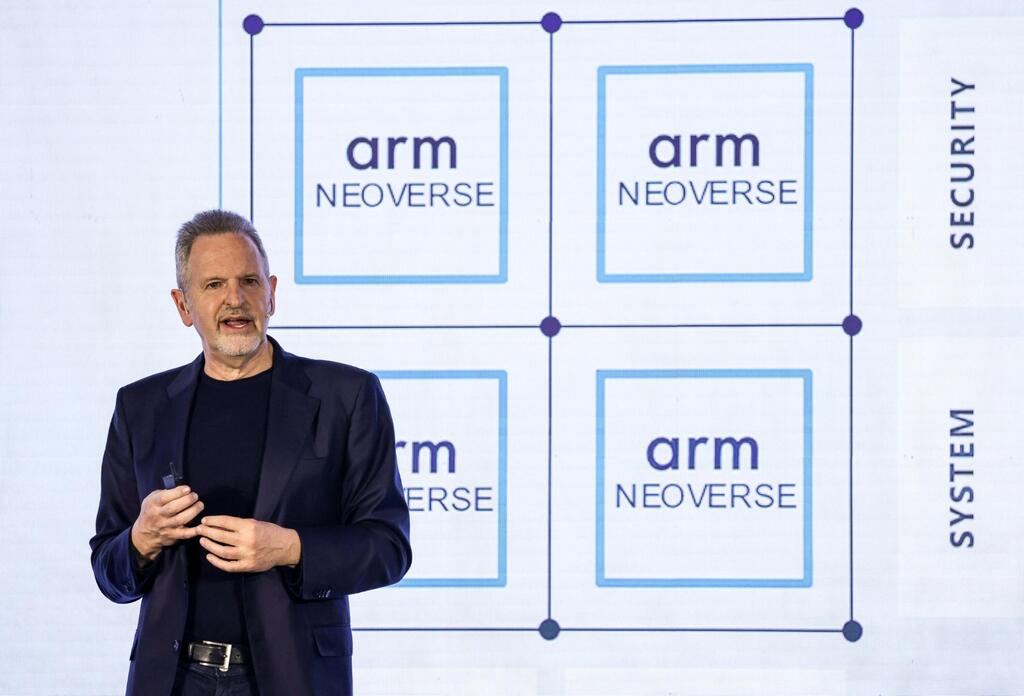
Analysis
Give their right Arm: Intel, Apple, Google all want a piece of chip giant
SoftBank, the controlling owner of chip development giant Arm, has recruited prominent names for what is set to be the biggest IPO of the year on Wall Street
The IPO of chip development giant Arm, expected to be the biggest of the year and one of the biggest in the technology sector ever, is heating up. The controlling owner SoftBank has already recruited some of the most prominent names in the world of technology to enter the company as strategic investors, among them, according to a Bloomberg report, Apple, Nvidia, Intel and Google.
Arm is expected to raise $5-7 billion at a valuation of $52 billion. Originally the target was $8-10 billion, but according to Bloomberg, the target was lowered after SoftBank decided to keep a larger stake of the shares.
Arm designs the architecture needed to develop processors and chips and licenses other companies to use that architecture to develop and design the chips themselves. There is almost no advanced device — computer, smartphone, tablet, or smartwatch — that does not incorporate chips based on Arm's architecture. The company's processors can also be found in household appliances, cars and industrial equipment, and the company is also expanding into the field of servers for data centers.
According to the data provided in the prospectus prior to the offering, in the fiscal year ending March 31, 2023, Arm recorded revenues of $2.68 billion, a decrease of 0.9% for the same period last year. Gross profit recorded a slight increase of 0.04% to $2.57 billion. Operating profit climbed by 6% to $671 million, while net profit fell by 4.6% to $524 million. In the second quarter of 2023, the company had revenues of $675 million (a decrease of 2.5% compared to the corresponding quarter) and a net profit of $105 million (a drop of 53.3%). Gross profit and operating profit also recorded a decrease in this quarter. Since its establishment, more than 250 billion Arm-based chips have been sold, a volume of 30.6 billion of them in the last fiscal year.
According to Bloomberg, in recent months, as part of the preparations for the IPO, SoftBank, which purchased Arm in 2016, held talks with clients and partners in order to enter the company as strategic investors. The final plans are being drawn up these days, and more may change, but according to sources in the know, the companies that are expected to invest include not only Apple, Nvidia, Intel and Google, but also AMD, Samsung, Synopsys and Cadence Design Systems.
Each of them is expected to invest between $25 million and $100 million, and all of them have very good reasons for wanting a share of Arm. Apple, Nvidia and AMD are chip developers, well-established manufacturers, that make very extensive or exclusive use of the Arm architecture. All Apple devices—iPhone, Mac, iPad, Apple Watch, and others—use Arm-based chips. Nvidia's AI chips, which dominate the field of generative artificial intelligence to the point of crippling some of its competitors, are also based on the Arm architecture.
Google is less known as a chip developer, but in the last two years it has increased activity in the field with Google Tensor, an Arm-based chip of its own design that is integrated into the company's Pixel devices. Samsung not only develops Arm chips for its Galaxy devices and smartphones and other devices, but also functions as a manufacturer of Arm chips for other companies without their own production facilities, such as Nvidia and Apple.
For all companies involved, a significant stake in Arm will give them a voice in charting the direction in which the company will head, will allow them to ensure that its strategic plans and future developments serve them, and will help smooth the process of developing and manufacturing their Arm-based chips.
The same is true for Synopsys and Cadence Design Systems, whose main business is not in the development and production of chips but in the development and production of the hardware and software used in the production process. Also for them, proximity and ownership of the company that develops the basic architecture of the field will help them in the adjustment and development of the product strategy.
Intel looks to be the odd one out. Its chips are based on an architecture it has developed, and this is also its pride in recent decades. But Intel is in the midst of a significant strategic shift to enter the field of manufacturing chips for other companies (as opposed to the traditional model where it only develops and manufactures its own chips). And here, the ability to produce Arm-based chips is not just a nice bonus, it is a critical requirement without which Intel has no reason to make an effort to enter the field, since this is the only way to compete for major production contracts from players like Apple and Nvidia. The company faces a significant task of building a broad, high-output, high-quality production system of Arm-based chips, and a share of the company can assist it in gaining access to the knowledge and technologies needed for this effort.














